
Resurrection of a King
Part IV: Re-discovery of the "King"
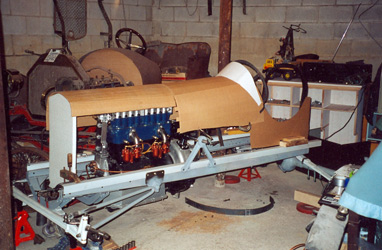
In the old car and auto-racing hobby, one thing that seems to surprise the older crowd is to see a young person become intensely curious about an elder's particular field of interest. Considering the last entry of the King's Special 'diary' was made in 1934, it's hard to imagine that a lad in his 20's would visit this writer's home exactly fifty years later, asking if he had the motor for the King's Special. Even more strange was the fact that he was not from the Thunder Bay District at all, nor had he been raised there. He had simply developed a fascination for Canadian Model T's, especially those that had to do with racing, and wherever he traveled, he searched for information about them.
Those familiar with his articles in the Old Autos newspaper would know his name. 'Kevin Mowle' has become synonymous with 'The Canadian Model T.' While staying in the Lakehead, he was intrigued by what he had heard about the 'King's Special,' and hoped he could find the car, or at least, what there was left of it. He was directed to a home in Wyoming, Ontario, where he was told the engine might be found.
There, he was able to meet the family that had coveted this important artifact for decades. In the basement, on a wooden stand, was a racing engine, but up until this time, no one had ever been able to positively identify it, nor had anyone seen one like it. The engine was an impressive piece of engineering, as the attached picture shows, centered around a 1919 Model T block. It sported an overhead camshaft and full-pressure lubrication, with an extended, finned oil sump that, connected to the original oil pan, could hold up to 19 quarts of oil. The transmission, missing the reverse drum, was attached to a counter-balanced crankshaft, and the flywheel was cut to a 7"diameter. No visible markings on the head or castings were present to identify a manufacturer, but all the aluminum parts were stamped with the number 10, except one, which carried an 8. Kevin studied the engine and took pictures, but admitted he couldn't identify it either; but, he would work on it. He, of course, asked where it came from, and what other parts came with it.
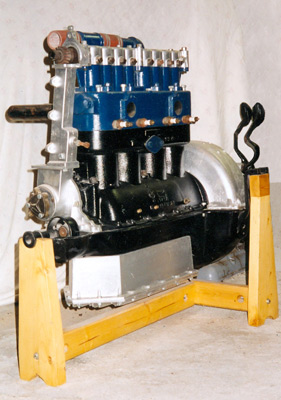
Over the next 15 years, Kevin searched for more of the history of the car, and obtained enough information about the engine to positively identify it, and connect if definitively to the King's Special. He was also able to acquire enough pictures of the famous racer to connect other parts that had survived, to the renowned race car. His efforts eventually led to the reconstruction of the vehicle.
Through his world-wide network of racing 'T' enthusiasts, he was able to locate original literature on the manufacturers of speed equipment. He eventually narrowed the possibilities for this engine down to one. Re-examination of a front engine casting revealed the blurred image of 'R M Roof', the company situated in Indiana that had manufactured the part. This was definitely a Roof conversion, since it not only had what was left of the original embossing, but it matched pictures of the engine that had been published in the company's sales advertisements in the 1920's. The next step was to look for any features that would identify it as the one used in the King's Special.
First of all, there were very few examples of this particular Roof engine design ever produced, and this is one of a much smaller number that has survived. Secondly, it came from the Lakehead and had been with the same family since the early 1960's, when certain collectors were beginning to appreciate the older cars for something other than their scrap value. Thirdly, there were two pieces of physical evidence that this engine was the one from the old racer. One thing was the right side engine mount that protrudes through the body of the car; the other is the silhouette of the unique oil pan sump that only Roof used on their engines. The motor mount has its outer edges spread slightly, the left a little more than the right. The photo shows this feature. To check to see how the oil pan lined up, a transparency of the engine was created and placed over the early photo of the car; it was a perfect match. Even the shadow of the exhaust pipes in the picture coincided with the ports of the engine. This was the engine that at one time powered the King's Special. (Many years later, it was confirmed by an old-time racer that there had been only one overhead cam Model T engine in the Lakehead, the one used in the King's Special).
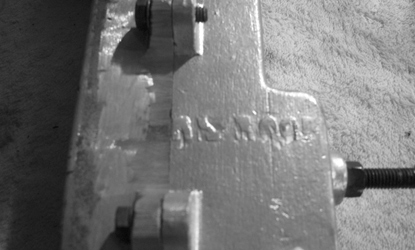
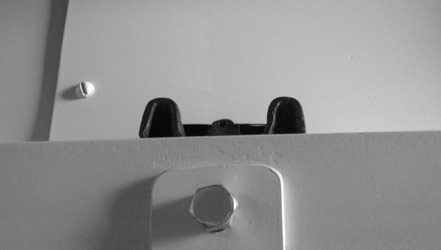
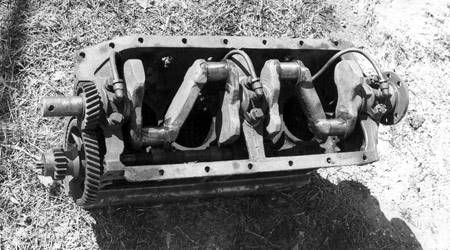


What is rather surprising is that, until Kevin had come onto the scene, no one in our family had known anything about the old race car. The motor had surfaced during a monthly meeting of the Lakehead Antique Car Club about 1964 when one of the members expressed his delight in acquiring his most recent toy, a Model T racing engine. He was so excited about this purchase that he invited those present to come over to his garage and view this rare piece of antiquity. It was there that the Cronk brothers and brother-in-law, John Squirrell, were smitten by its appearance. Shortly thereafter, Jim and this writer arranged a swap: a 1926 Model T touring, in sound running condition, for this engine and transmission assembly, as well as several boxes of related parts, including some of the steering apparatus. First we decided to gather up the engine parts; then, we would decide what to do with them.
In those days, our three family members had a '27 T roadster pickup (which Jim's family still has) that we would often use to deliver flowers for LeCocq the Florist, from the shop in Fort William to the one in Port Arthur. We had gone through several motors in only a couple of years, mainly because we knew very little about them. Putting the big engine in the T seemed to make a lot of sense at the time, and would certainly speed up those deliveries! (We had no idea that this engine, in its prime, had driven the King's Special to an unofficial top speed of 102 miles per hour, clocked along a stretch of Highway 61 between Fort William and the US border. Apparently, Frank Colosimo would take the car out when certain police officers would look the other way, and see what it would do on a straight stretch of road. Running the vehicle with no brakes, no licence, and at speeds twice that of the posted limits, was not something the owners of the car could publicize at the time).
Meanwhile, 'Brother' John was not too happy about the alterations we had to make to the body of the otherwise decent truck. To provide enough space for the oil pan, we had to drop the 'wish bone' about 6" and make up some adapter plates. Then the rad had to be modified to accommodate different sized hoses going to different locations. But the worst 'butchering' involved carving into the cowl to make room for the much larger head and camshaft housing of the new engine: a substantial piece had to be cut from the firewall, and the gas tank required a significant chunk to be removed from its center. We decided to stick to the conventional transmission that was in the vehicle, rather than use the racing version which had no reverse.
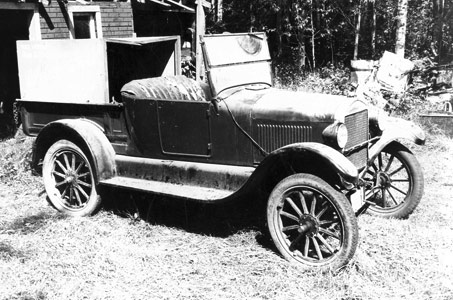
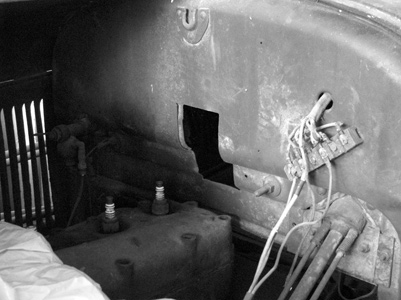
This story may have had a totally different and abrupt ending if the engine had performed as well as we expected. We would likely have blown it up! Fortunately, or otherwise, things did not go well. While our makeshift spark control system, carburetion, and exhaust worked fine, the Dodge oil pump, that had been cobbled to the lower camshaft, refused to provide constant oil pressure. But our big problem was failure of the cylinder head gasket. We had cut it from solid copper, and it was just too hard to adequately seal the engine. Once water was added to the rad, while the engine was running at a fast idle, water spewed out everywhere. The engine had run for only a minute or so, but we knew we couldn't drive it with such massive leakage, so, reluctantly, we shut it down. For exactly fifty years!
Once the engine was taken out of the little T truck, it languished, in pieces, in an open drive shed. Other parts, that were later identified as being part of the King's Special, were treated with about the same disrespect: the front and rear axles were in a heap outside the shed, along with the rear springs and cross-member. The wire wheels were slightly better off, having been adapted to a 1911 Overland chassis that sat in the same drive shed.
However, by a stroke of luck, 1981 marked a turning point in the history of the King's Special. All the most vulnerable chassis parts, which eventually were used in the re-construction of the car, were moved to a more climate-controlled space - - - - the author's basement! The axles, however, remained outside for many more years.
Over the next 20 years, the car that had all but disappeared was to make a comeback. Had it been a race horse instead of a car, once it died and had been dismembered, it would have stayed dead. However, many old car nuts have never mastered the process of bereavement and will therefore go to extraordinary lengths to bring bygone relics back to life. The King's Special was one of them.